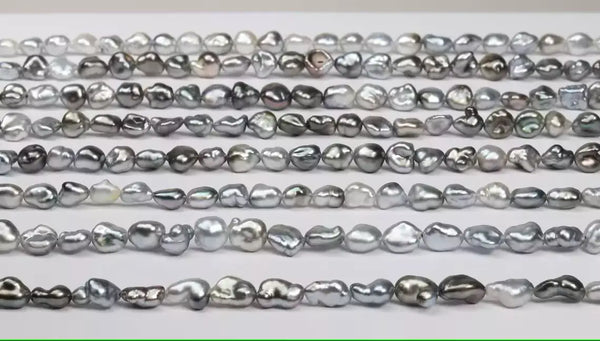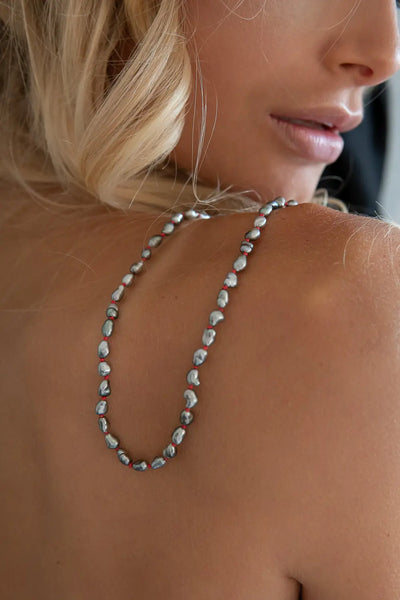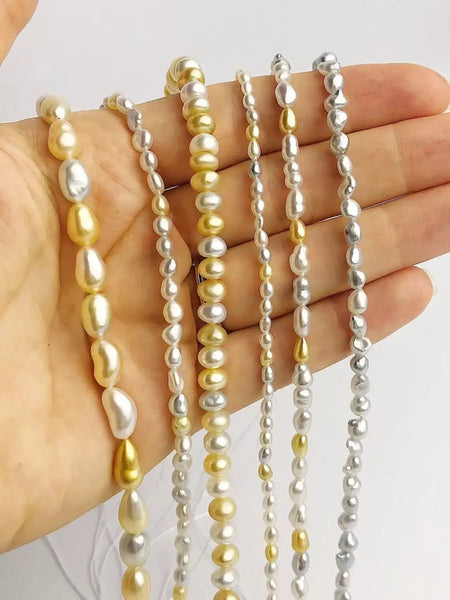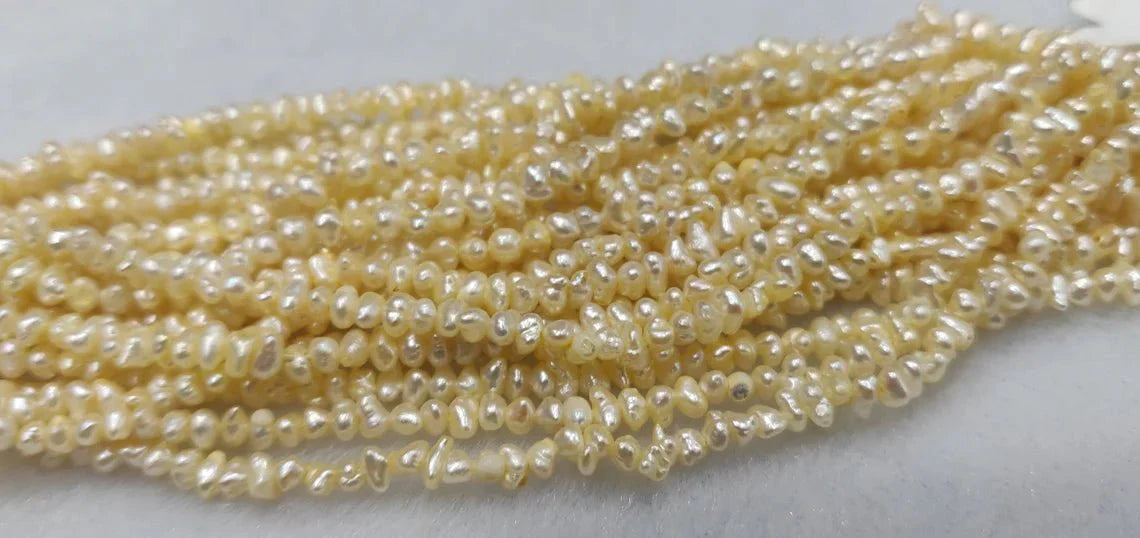
Today, we delve into a fascinating topic about a little gem known as keshi.
What are Keshi?
Keshi are non-nucleated pearls formed unintentionally as a by-product during the pearl cultivation process. Their formation occurs when an oyster rejects and "spits out" the implanted nucleus before the pearl process is complete, or when a few cells separate from the implanted piece of an epithelial tissue, forming separate pearl sacs. These random pearl sacs eventually produce random non-nucleated pearls - keshi, a Japanese term meaning "poppy seed."
Keshi can only be of marine origin, formed in saltwater mollusks. Freshwater pearls without a nucleus are not considered keshi, though Chinese (and many other pearl vendors nowadays) call them keshi. However, technically and officially by CIBJO standards these are not keshi, but non-nucleated freshwater pearls. It is an important note to keep in mind.
Keshi are usually small in size, and because there was no nucleus to define the final form of the pearl, their shapes vary greatly. But Tahitian and South Sea keshi pearls can be quite large, if left to grow in their pearl sacs for a few years. They are very lustrous, very beautiful and extremely rare.

Picture: Tahitian Keshi
The Beauty of Keshi Pearls
Keshi pearls come in various colors and typically have a beautiful and very high luster and even orient (this rainbow-colored effect like on a soap bubble). This feature is attributed to their homogeneous, 100% nacre composition (without a nucleus). Most keshi pearls have a luster that is rarely found in cultured pearls of even the highest quality.
It is also essential to note that keshi pearls are not considered natural (wild) pearls. Even the fact that keshi pearls are solid nacre doesn't qualify them as natural. It is widely accepted that keshi are a by-product of the cultivation process and not a natural phenomenon.

The Rarity of Keshi
Nowadays, keshi is a very rare find. Keshi, especially Tahitian and South Sea Keshi, were once fairly common on a market and a rather advantageous purchase in terms of price-quality ratio. Today, keshi pearls are much less common. This rarity is due to a lot of marine pearl farms have been scanning charged mollusks to determine whether the nucleus was rejected. This happens just a few months after the operation to implant the nucleus, and when such non-nucleated oysters are found, they are re-"charged" with nuclei before a keshi can form. This practice has made keshi much rarer than before. Keshi from Japanese Akoya is particularly rare, as the Japanese consistently control the cultivation process at a high-tech level.

Picture: South Sea Keshi
However, keshi pearls are still available and very popular among enthusiasts due to their beauty and rarity. They are used to create multi-strand threads, pearl "chains", and in high-end jewelry. If you're lucky enough to find keshi pearls, don't pass them by! I, for one, can't.
Please find our keshi pieces in Marina Korneev Pearls store.


